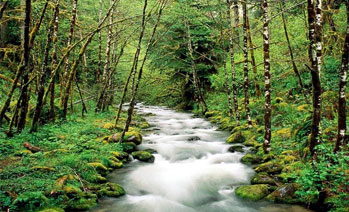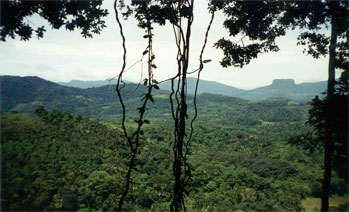Sinharaja Forest Reserve
Sinharaja Forest Reserve is one of the best known places of the Sri Lanka which elegantly rests across its damp region at the southern brink. This tropical island is considered to be the most fortunate because of this stretch of virgin rain forest which is incredibly shrouded by copious rain clouds. Even though it seems as a shroud but these rain clouds affirms to be a boon for this reserve as it replenishes its deep soils and balance water resources. With such significance, this reserve is extensively important to the island’s ecosystem and bearing this fact in mind it has been titled as a World Heritage Site in 1989

The reserve comprise of an incredible natural setting as it is at brink with the Koskulana Ganga at the north and the Gin Ganga at the south. The east comprises an old foot track touches the highest peak in the forest Hinipitigala (1171m) whereas the west has the emerald land decrease. This reserve has been fortunately bestowed 189 sq untouched forests that run across 21 kms from east to west whereas from north to south it runs about 3.7 kms. It is believed to be the royal reserve of this tropical island. It even has some regal evidences which prove that this reserve was called as Rajasinghe Forest.
The place was not of concern at its initial stages. However in 1840, the British made it their crown land. After which, there were some efforts done by the British toward its preservation. Later in 1971, the reserve underwent some damage when the loggers moved in and done some logging including the replacement of hardwood with mahogany and building up of a wood chip mill. Realizing the loss, conservationists made the government to halt all the logging practices in 1977. The damage done to the reserve was gradually recovered and Sinharaja Forest Reserve was hence saved.
Sinharaja at present has a wild cornucopia of flora as well as fauna. The reserve comprises an extensive range of canopy trees which are standing tall at a height of 45m. Coming to the sub canopy trees, these are all extremely rare and endangered. The reserve considers itself fortunate in housing 160 species with 18/20 endemic species present in the island. The reserve serves as an abode to some species of cats including leopard rusty spotted cats and fishing cats. However, they are seldom seen. Who is endemic are the purple-faced langurs, Sambar, barking deer and wild boar. Besides these common and uncommon species, there are other significant fauna as well in Sinharaja including 45 species of reptiles.

The periphery of the forest comprises around 22 villages and this reserve provides employment to the locals of the village. These village people are permissible to enter the reserve in order to tap palms so that jaggery and treacle can be hauled out. This is one way of providing employment to people the other way is to employ people in collecting dead timber and leaves for fuel and construction.
The best times to visit: The place is mostly under drizzles and downpours therefore August - September and January – April, as these are the dry months, proves to be the best in terms of travelling.
How to reach: CTB buses are easily accessible from Colombo, Galle, Nuwara Eliya and other major cities at frequent intervals. Cabs are another good option to travel as it saves time and provide scenic beauty enroute.
